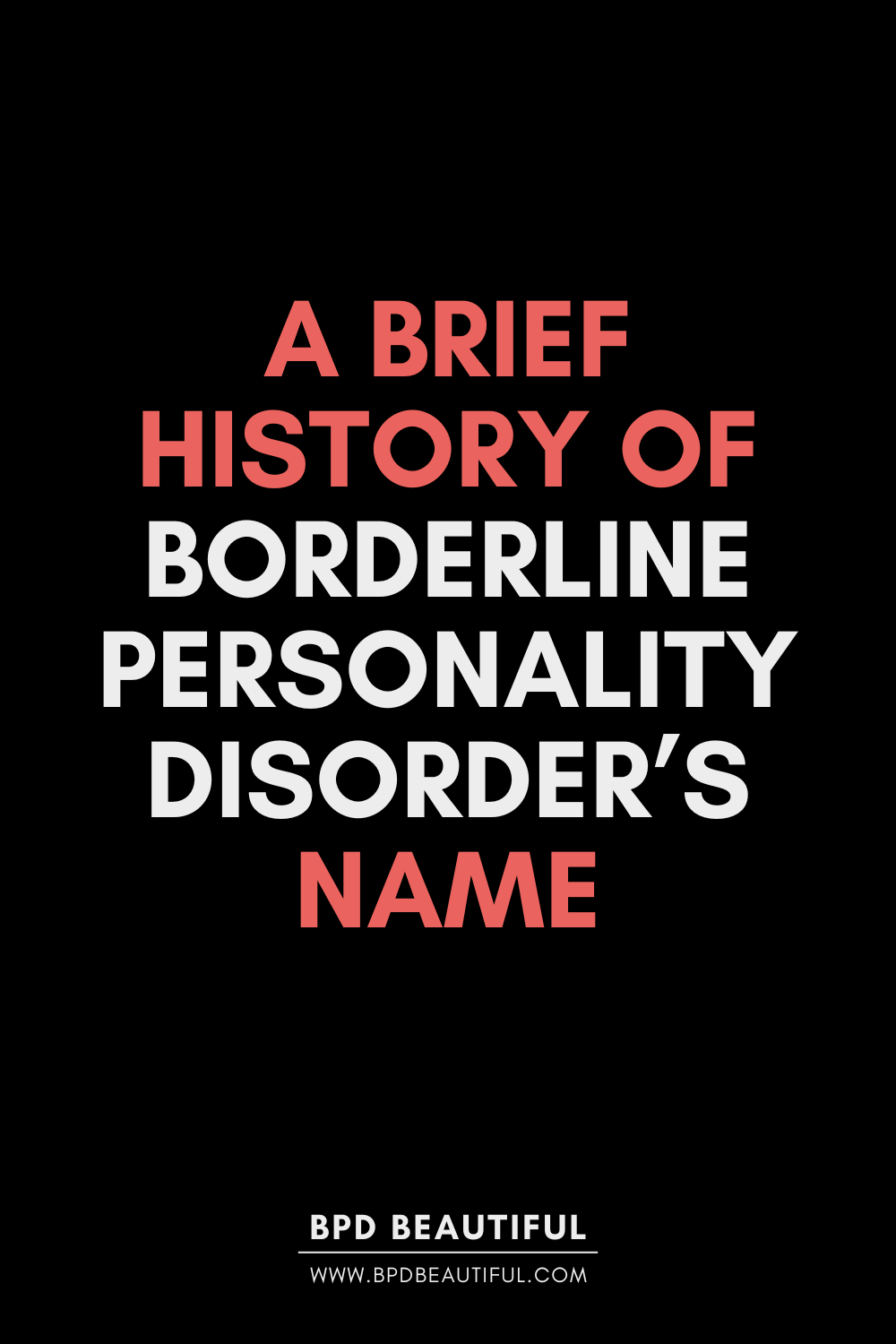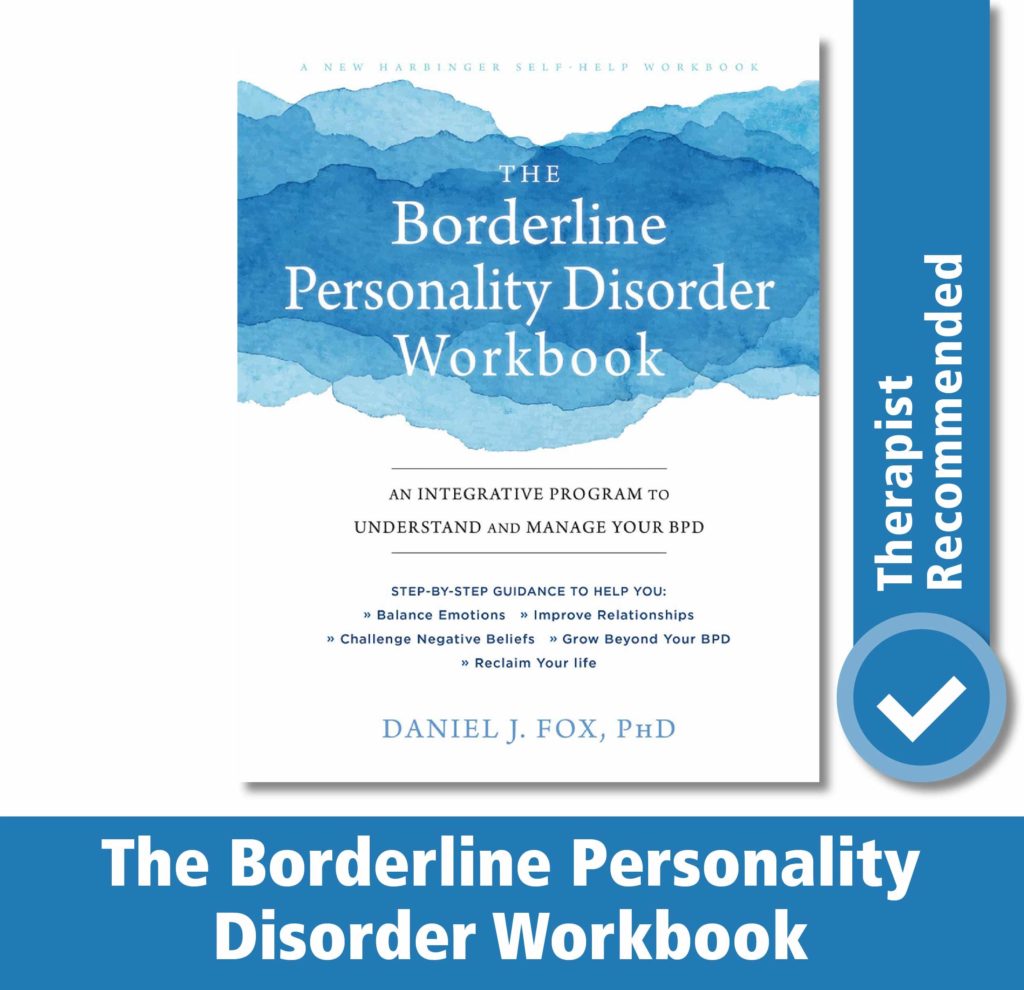This article was originally published on Psychreg.
The term “borderline personality disorder” (BPD) is interesting in psych nomenclature. Usually, psychosocial illnesses are named after their most prominent symptoms. For example, bipolar disorder (formerly, manic depression) refers to the “two poles” of mania and depression.
Many medical conditions have carried different labels throughout history; even now, official diagnoses change every so often. But sometimes these designations have incorrectly described illnesses and contributed to misinformation. This is unfortunately still the case with schizophrenia (with “schizo” meaning “split” and “phrenia” referring to “mind”). And just as there have been efforts to change the name of schizophrenia, the same is true of BPD.
But why exactly was it called borderline personality disorder in the first place? In this article, I’ll briefly cover the conceptual history of BPD, including its name and classification. I’ll also touch on why many people would prefer to call the BPD construct by a different name – or to reclassify it altogether.
Originally, I was only going to discuss the “borderline” aspect, however, there’s also the quite popular view that BPD should not be deemed a “personality disorder” at all. So, I’ll explore both parts of the diagnosis.
At the end of the day, it’s essential for us to remember the power held by words. We should be mindful that words can be used to discriminate and disempower, especially if we are writers and editors.
Personality Influences on Mental Illness
The modern history of psychiatric nosology (“medical classification of diseases”) stems back to Emil Kraepelin. According to this article, although his “goal of developing a consistent ‘natural’ classification of the major mental disorders” hasn’t even been achieved in this day and age, let alone back in the early 1900s, he did advocate for more investigation into the influence of personality differences on mental illness.
In Personality Disorders in Modern Life, Theodore Millon mentions that Kraepelin described (in his Textbook of Psychiatry) an “excitable personality” that shares some similarities with the modern borderline construct. Millon writes:
Such individuals could display “great fluctuations in emotional equilibrium,” “fall into outbursts of boundless fury,” “shed tears without a cause, give expression to thoughts of suicide, [and] bring forward hypochondriacal complaints….”
Theodore Millon
He also draws links between BPD and Kurt Schneider’s “labile type,” characterized by “abrupt and volatile mood changes and volatility.” Likewise, this study’s results associate the labile type with the DSM’s BPD.
The Borderline of Psychosis and Neurosis
Regarding the “borderline” part, it originates with Adolf Stern. The psychoanalyst proposed the term back in 1938 to describe “a large group of patients [who] fit frankly neither into the psychotic nor into the psychoneurotic group….”
I imagine that, back in the 1930s, he couldn’t imagine how widely known this designation would be nearly 100 years later. On that note, while therapists still use “psychosis” to describe a disconnection from reality, “neurosis” has long been replaced by various mood and anxiety disorders. (But “neurotic” and “neuroticism” are still floating around.)
Later, in 1945, after the term had gained some traction, Stern elaborated: “The patients who fall in the so-called borderline group constitute a large percentage of those who seek treatment for neurotic illness. Many of them are desperately sick people.” While the descriptor “desperately sick” may sound harsh to our modern sensibilities, it is true that BPD is often experienced as one of the most painful mental health conditions (you may Google it).
Borderline Personality Organization
Although other theorists had merged “borderline” and “personality” earlier, Otto Kernberg is often cited in histories of the BPD diagnosis due to his psychodynamic concept of “borderline personality organization” (BPO), outlined in a 1975 book.
Borderline personality organization is a broader psychoanalytic term, encompassing other personality disorders, such as narcissistic and schizotypal. It refers to a level of personality organization halfway between a healthier “neurotic level” and a more extreme “psychotic level.” So, it’s similar to Stern’s “borderline” (between neurosis and psychosis), but Kernberg is detailing a level of personality organization.

DOWNLOAD FREE WORKBOOK
Discover yourself & feel a little more secure in your identity with our Self Discovery Workbook.
BPO is characterized by identity diffusion and a fragmented sense of self. According to this resource, an individual with BPO has a hard time seeing “a consistent view of themselves or others, over time and across situations,” with their fragmented identity resulting in “severe and repetitive problems with interpersonal relationships.” This might be compounded by a so-called “primitive defense” they can engage in: splitting.We can see how BPO contributed to the development of BPD. Around this time, the symptom cluster defining the modern classification of BPD was starting to become more apparent. In addition to long-standing identity fragmentation, signs included “striking fluctuations from periods of confidence to times of absolute despair,” labile and reactive mood, tendencies to suicidal ideation and self-harm, concerns over interpersonal rejection and abandonment, and transitory psychotic symptoms (such as paranoia and hearing voices).

Is BPD a Personality Construct or Schizophrenia-Spectrum Disorder?
It could be said that the above symptoms do suggest that perhaps “borderline,” the borderline between neurosis and psychosis, isn’t such a bad descriptor after all. Especially, as some individuals with BPD experience transient paranoid ideation and hallucinations. (Around 30% to 50% of adults with BPD hear auditory hallucinations.)
According to contemporary BPD researcher John Gunderson, Stern noted that these patients tended to regress into “borderline schizophrenia” mental states. They existed on the borderline of schizophrenia.
Other early theorists added to the (ongoing) conceptual confusion surrounding the borderline diagnosis. This paper, outlining psychotic symptoms in BPD, mentions that some viewed the borderline construct not in Kernberg’s terms, but as “a form of schizophrenia (e.g. latent, pseudoneurotic or borderline schizophrenia).”
From this viewpoint, it was considered not a personality organization but a variant or mild form of schizophrenia; it belonged on the schizophrenia spectrum.
Some researchers still support this interpretation. For instance, a 2021 article delineates how “when entering the DSM-III, BPD was separated from its evolutionary ‘twin’, schizotypal personality disorder,” probably unjustifiably in the authors’ view. They argue that, while schizotypal PD is now rarely assigned, BPD is “over-inclusive and both clinically and conceptually difficult to differentiate from schizophrenia spectrum disorders.”
I have read a similar argument made about avoidant personality disorder.
About the DSM, how did the idea of a “borderline personality disorder,” as we now understand it, first find itself in the manual?
The previously mentioned researcher Gunderson writes that “borderline” was still a psychiatric colloquialism up to the 1970s. His piece explains how the next decade saw “borderline” emerge as “an adjective in search of a noun,” and how descriptive psychiatry led to attempts to describe what exactly a “borderline” patient was.So, in 1975 he co-authored a paper titled “Defining Borderline Patients: An Overview.” And the rest is history. Borderline personality disorder made its official debut in 1980’s DSM-III – as a personality disorder.
Should Borderline Personality Disorder Be Reclassified?
Looking at BPD’s conceptual history, it’s easy to see why there’s ongoing debate about the usefulness and validity of the current construct. And its name. But going back to Kraepelin, he was “a skeptical realist when it came to psychiatric nosology” and “aware of the problem of defining the boundaries of illness and health but knew this was not unique to psychiatry.”
Also, as borderline PD is an incredibly heterogeneous disorder, with over 200 ways to meet the five criteria, this further complicates its classification. As does the fact that the condition is often comorbid with virtually every category of mental disorder: mood disorders, anxiety disorders, other personality disorders, substance use disorders, eating disorders, trauma disorders, dissociative disorders, psychotic disorders, etc. – and also sleep disorders and so on.
Does the phenomenology (lived experience) of BPD suggest it’s better placed in the affective/mood disorder group, due to its similarities to cyclothymia? (This explains some of the commonalities between BPD and bipolar disorder.) Marsha Linehan suggests that it’s best thought of as a disorder of emotion regulation, which would bundle it in with affective disorders.
Or should it be classed as belonging somewhere on the schizophrenia spectrum, as previously mentioned?
Would it be better to think of it as a trauma-induced disorder, similar to complex PTSD and PTSD? I’m no expert, but from what I’ve read, I think coding BPD as a trauma disorder doesn’t capture the entire picture. If trauma were the only factor, why doesn’t everyone with a history of trauma have a “personality disorder?” And why do some people with PDs not report a traumatic past? It seems better to take a holistic biopsychosocial perspective.

As a BetterHelp affiliate, we receive compensation from BetterHelp if you purchase products or services through the links provided.
Should BPD’s Name Be Changed?
A popular alternative moniker is emotionally unstable personality disorder; I think that was how the ICD classified it recently? But the ICD-11’s current update still has a “Borderline pattern” specifier under its PD group. (It, thankfully, also lists complex post-traumatic stress disorder.)
Many realize that BPD is heavily stigmatized, inside and outside mental health services. You may face public stigma, institutional stigma, health provider stigma, and – perhaps worst of all – self-stigma. Part of this may be caused by the unfortunate term “personality disorder.” Along with substance use disorders, schizophrenia, and bipolar, perhaps borderline PD elicits the worst prejudice and ignorance.
But prejudice, stigma, and discrimination are associated with every mental illness.
Would changing its name make a difference? A 2018 study conducted with participants from the general public found that changing BPD’s name to either “Linehan’s Syndrome” or “Emotional Dysregulation Syndrome” would not decrease public stigma.
What has been identified as an effective stigma reducer is close contact with an individual with a mental illness. Rather than worry too much over the concept or terminology of BPD, we should try to support and center the voices of those with lived experience of the condition. Through greater public awareness, we can help reduce the stigma associated with BPD and other psychosocial illnesses.
BPD Resources
BPD Characters: Read the first 6 chapters of Sadie’s Favorite – an upcoming novel by Sarah Rose, creator of BPD Beautiful.
Get 20% off your first month of BetterHelp. Get matched with a licensed therapist within 48 hours. Subscriptions as low as $65/week, billed every 4 weeks. Cancel anytime.
Manage your BPD symptoms with a printable workbook.
See our recommended list of books about BPD.
Start a Discussion
Do you think the name ‘borderline personality disorder’ should be changed? Share your perspective in the comments! We love hearing from people affected by BPD.
Pin This Post
Liked this post? Please help support BPD Beautiful and spread BPD awareness by pinning it on Pinterest.




